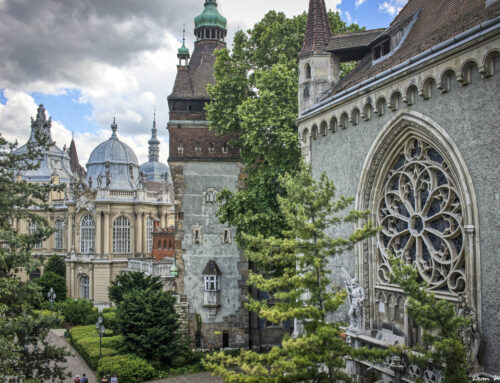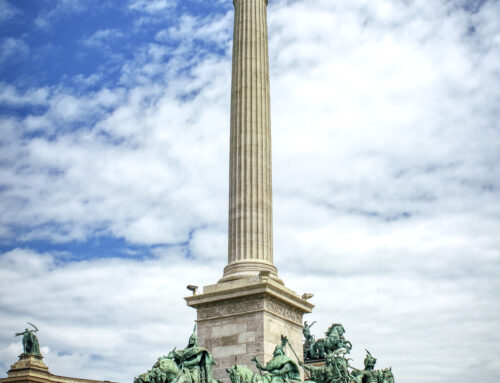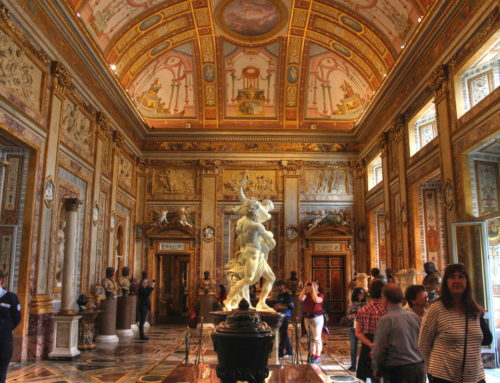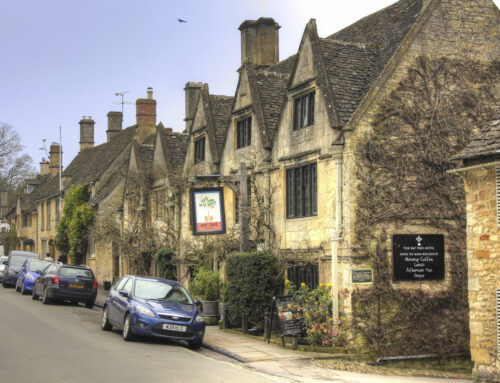This post may contain affiliate links. If you make a purchase by clicking on these links, I may earn a small commission at no extra cost to you. Read the disclaimer for more information.
On the way to Serengeti National Park in Northern Tanzania, within the boundaries of Ngorongoro Conservation Area, is one of the most important archaeological sites in the world. Olduvai Gorge (Oldupai Gorge) is the site of several important hominid fossil discoveries.
I knew about Olduvai Gorge before I visited Tanzania, but all I really knew about it was that some of the earliest human remains had been found there. On our way to Serengeti National Park, we stopped in at Olduvai Gorge for lunch and to explore the museum. What we received was a talk from a guide while we looked out over the gorge, before being allowed to explore the museum by ourselves.

Looking out over Olduvai Gorge
The site was first excavated by Louis and Mary Leakey after hominid fossils had been discovered there. Due to the regions volcanic past, Olduvai Gorge had cut through layers and layers of volcanic sediment that had preserved so many of the fossils. What this allows is a look into the past several million years.
Louis and Mary Leakey discovered remains of several types of hominids, and this is what confirmed the African origin of our species. Their discoveries of skeletal remains along with stone tools, rock art and evidence of dwellings dated our ancestry to over 3 million years old, vastly changing the accepted time frame of human evolution.
Perhaps the most impressive and famous discovery of all was the incredibly preserved set of ancient hominid footprints known as Laetoli, that show three hominids walking together around 3.6 million years ago. Although we couldn’t see this site for ourselves as it has been reburied for preservation purposes, there is an actual mold of this site in the museum, and it was really quite amazing to see something as simple as footprints that are dated back over 3 million years. I could actually clearly make out the footprints of an adult and child walking along beside each other.
The museum also contains many different finds from Olduvai Gorge, with impressive displays of ancient tools and human like skulls and bones, and the information provided at the displays tells you all about each piece.
As I looked out over the gorge before me, it was strange to think that this was basically where it all began. Over 3 million years ago there were people similar to ourselves walking right here, and I wondered what it must have been like to live in such a time.

Panorama of Olduvai Gorge – Where it all began







One of the best sites of nature
Incredible! It’s really something to even contemplate, I can imagine it must have been amazing to experience first-hand.
Hi Cheryl. It really was amazing to be able to look out at this place where our ancestors lived so long ago.
Sounds like an interesting place to explore, it’s amazing that some of these discoveries date back over 3 million years!
Hi Mike. It was certainly interesting to learn about the origin of our species.
[…] poachers killed in Serengeti after fire fight with rangersWhere it all began at Olduvai Gorge, Tanzania .recentcomments a{display:inline !important;padding:0 !important;margin:0 […]
[…] Manyara in Northern Tanzania, we had to climb up into the Ngorongoro Highlands before we went to Olduvai Gorge and then onto Serengeti. Although we would be visiting Ngorongoro Crater for a safari on the way […]
How I imagine being in a place called paradise. Tanzania is one of those. Thank you for capturing good photos and experiences about it.